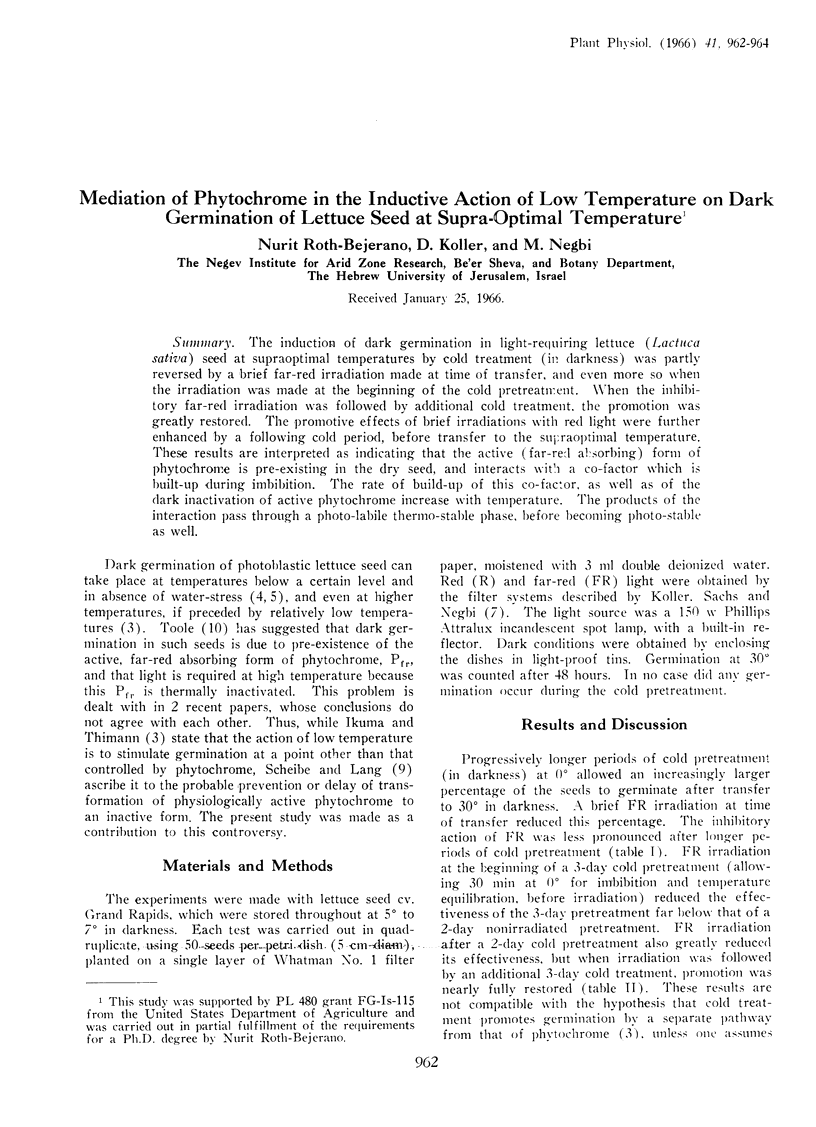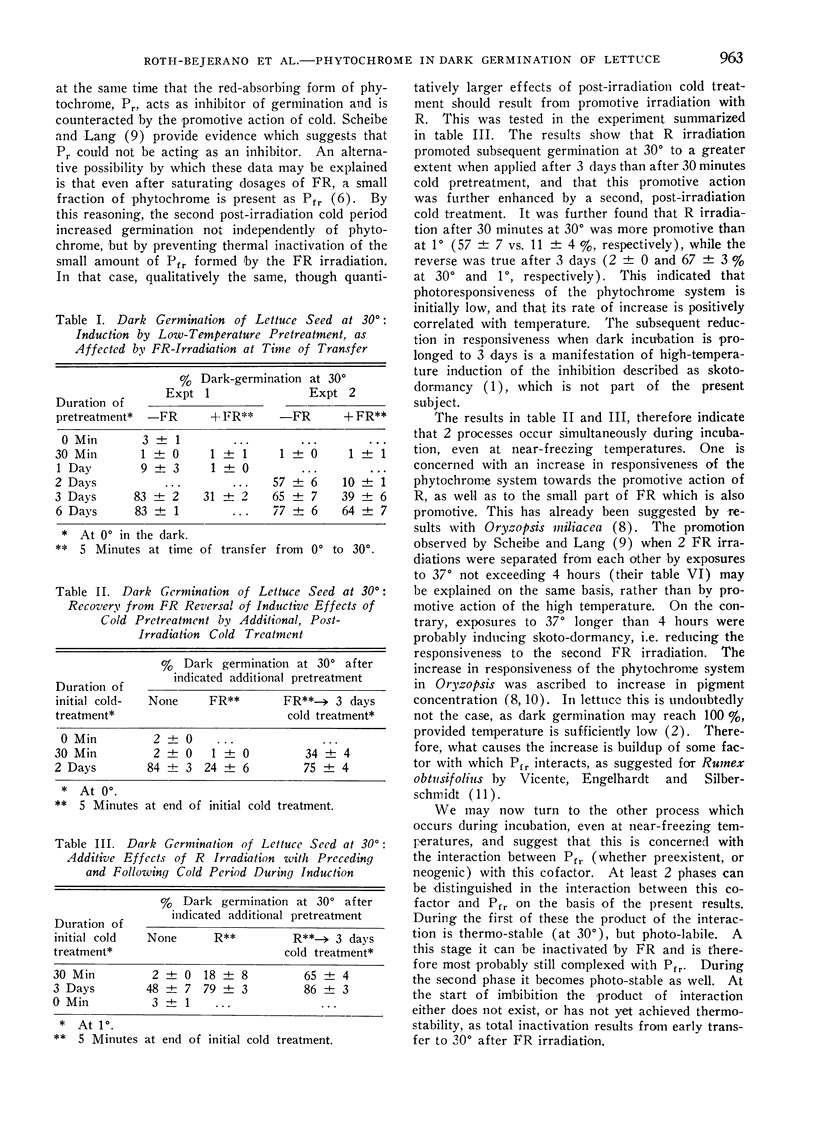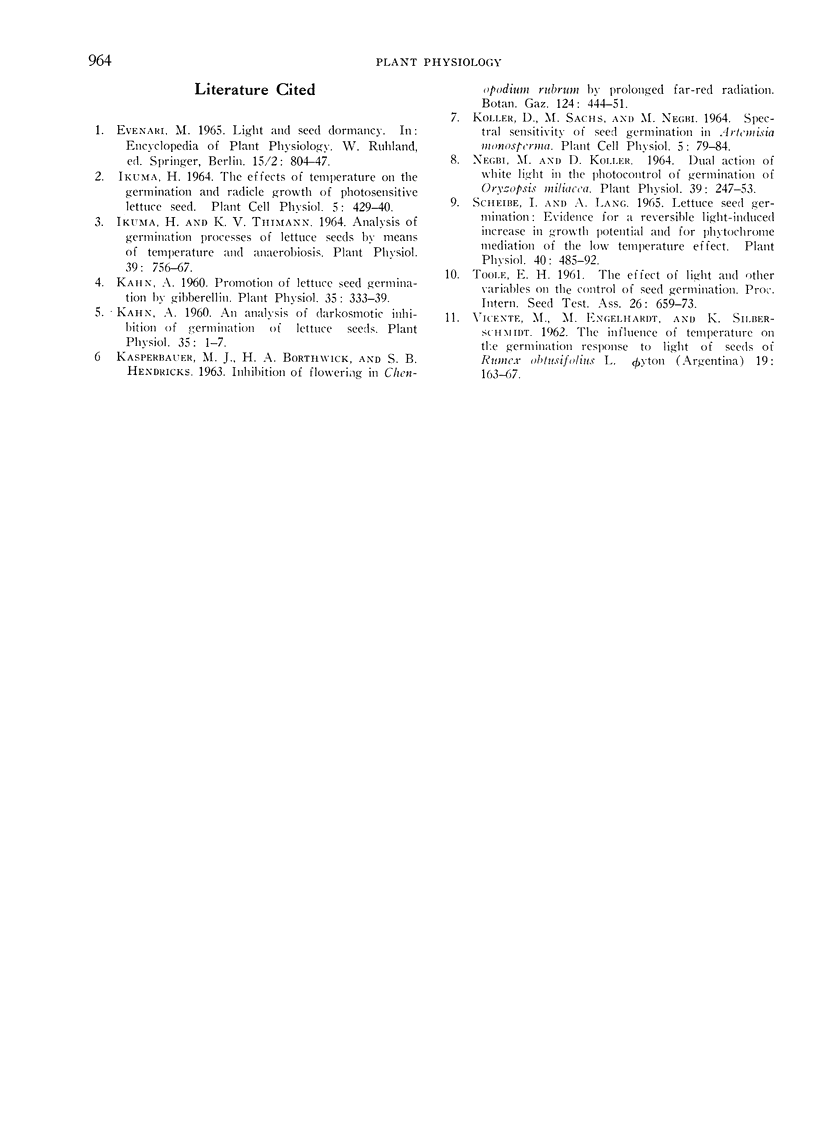Abstract
The induction of dark germination in light-requiring lettuce (Lactuca sativa) seed at supraoptimal temperatures by cold treatment (in darkness) was partly reversed by a brief far-red irradiation made at time of transfer, and even more so when the irradiation was made at the beginning of the cold pretreatment. When the inhibitory far-red irradiation was followed by additional cold treatment, the promotion was greatly restored. The promotive effects of brief irradiations with red light were further enhanced by a following cold period, before transfer to the supraoptimal temperature. These results are interpreted as indicating that the active (far-red absorbing) form of phytochrome is pre-existing in the dry seed, and interacts with a co-factor which is built-up during imbibition. The rate of build-up of this co-factor, as well as of the dark inactivation of active phytochrome increase with temperature. The products of the interaction pass through a photo-labile thermo-stable phase, before becoming photo-stable as well.
Full text
PDF


Selected References
These references are in PubMed. This may not be the complete list of references from this article.
- Ikuma H., Thimann K. V. Analysis of Germination Processes of Lettuce Seed by Means of Temperature and Anaerobiosis. Plant Physiol. 1964 Sep;39(5):756–767. doi: 10.1104/pp.39.5.756. [DOI] [PMC free article] [PubMed] [Google Scholar]
- Kahn A. An Analysis of "Dark-osmotic Inhibition" of Germination of Lettuce Seeds. Plant Physiol. 1960 Jan;35(1):1–7. doi: 10.1104/pp.35.1.1. [DOI] [PMC free article] [PubMed] [Google Scholar]
- Kahn A. Promotion of Lettuce Seed Germination by Gibberellin. Plant Physiol. 1960 May;35(3):333–339. doi: 10.1104/pp.35.3.333. [DOI] [PMC free article] [PubMed] [Google Scholar]


